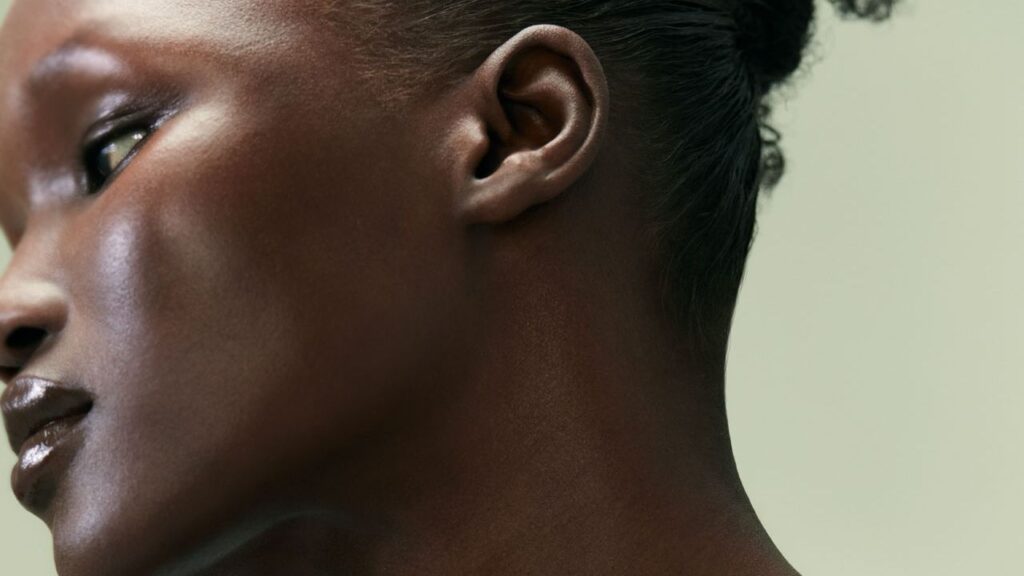Whether it’s bumps, pits, roughness, or a lack of luminosity, uneven skin texture is a common concern that affects many individuals. Recent data indicates a surge in global Google searches for “how to get rid of uneven texture,” up by over 5,000 percent in the last month, highlighting the widespread quest for smoother skin.
Uneven skin texture, a frequent topic in dermatology clinics, manifests through congestion, tiny bumps, rough patches, and dullness. “Anything that disrupts the skin’s smooth, even surface,” explains Dr Derrick Phillips, a consultant dermatologist. These irregularities are often found on the forehead, nose, chin, and cheeks.
Understanding the Causes
Jaya Nila, founder of Sifali, identifies several root causes for uneven texture, including dehydration, dead skin cell build-up, barrier damage, and scarring from past breakouts. “Most clients feel the texture before they see it,” she notes.
Dead Skin Cells
A lack of exfoliation can lead to a build-up of dead skin cells, resulting in a dull, rough texture. Dr Phillips recommends starting with a chemical exfoliant once a week, gradually increasing to twice weekly for oily or blackhead-prone skin. “It’s important not to over-exfoliate as this can compromise the skin barrier,” he warns. Ingredients like lactic and poly hydroxy acid are suggested for gentle exfoliation, followed by a hydrating serum or moisturizer.
Acne and Enlarged Pores
Acne-related issues such as whiteheads, blackheads, and enlarged pores also contribute to uneven texture. Dr Phillips advises against picking or squeezing, which can worsen inflammation and scarring. Instead, he suggests using a chemical exfoliant, incorporating a retinoid treatment, and ensuring adequate hydration with products suitable for oily and acne-prone skin.
Collagen Depletion
Collagen, essential for skin support, begins to deplete around age 25, accelerating with age. Protecting collagen involves daily use of a broad-spectrum SPF to prevent UV-induced collagen loss. Retinoids are also beneficial for stimulating collagen production and refining texture. “Expect to wait at least four to six weeks for changes,” advises Dr Phillips.
Compromised Skin Barrier
A robust skin barrier is crucial for overall skin health. Overuse of active ingredients, exposure to pollutants, or harsh weather can disrupt the barrier, leading to dryness, redness, and rough patches. Nila recommends ingredients like niacinamide, peptides, and ceramides to strengthen and heal the barrier. She advises simplifying routines to a gentle cleanser, nourishing serum, and ceramide-rich moisturizer until the barrier recovers.
Expert Recommendations and Treatment Options
To effectively address uneven skin texture, it is essential to understand the underlying causes. Consulting a skincare professional can provide personalized advice. While topical treatments play a significant role, in-clinic procedures such as laser therapy and microneedling offer additional solutions.
Consistency in skincare routines is vital. “Texture can improve quickly on the surface, but deeper clarity and smoothing take time,” says Nila. Expect changes in phases, with initial purging or flaking before noticeable improvement. The key is to repair, replenish, and refine over time.
Looking Ahead: The Future of Skincare
The ongoing interest in skincare solutions reflects a broader trend towards personalized and science-backed approaches. As research advances, new treatments and products will likely emerge, offering even more effective ways to combat uneven skin texture.
In the meantime, individuals are encouraged to play the long game, focusing on consistent care and protection to achieve healthier, more radiant skin.
About The Author
 Greenland Opens Doors to Tourists Amid New Direct Flights from the U.S.
Greenland Opens Doors to Tourists Amid New Direct Flights from the U.S. James Cameron Criticizes Nolan’s ‘Oppenheimer’ for Avoiding Nuclear Aftermath
James Cameron Criticizes Nolan’s ‘Oppenheimer’ for Avoiding Nuclear Aftermath The 100 Best Movies of the 21st Century: A Cinematic Evolution
The 100 Best Movies of the 21st Century: A Cinematic Evolution Donkey Kong Bananza: A Must-Have for Nintendo Switch 2 Enthusiasts
Donkey Kong Bananza: A Must-Have for Nintendo Switch 2 Enthusiasts California Judge Dismisses Jay-Z’s Lawsuit Against Lawyer Tony Buzbee
California Judge Dismisses Jay-Z’s Lawsuit Against Lawyer Tony Buzbee